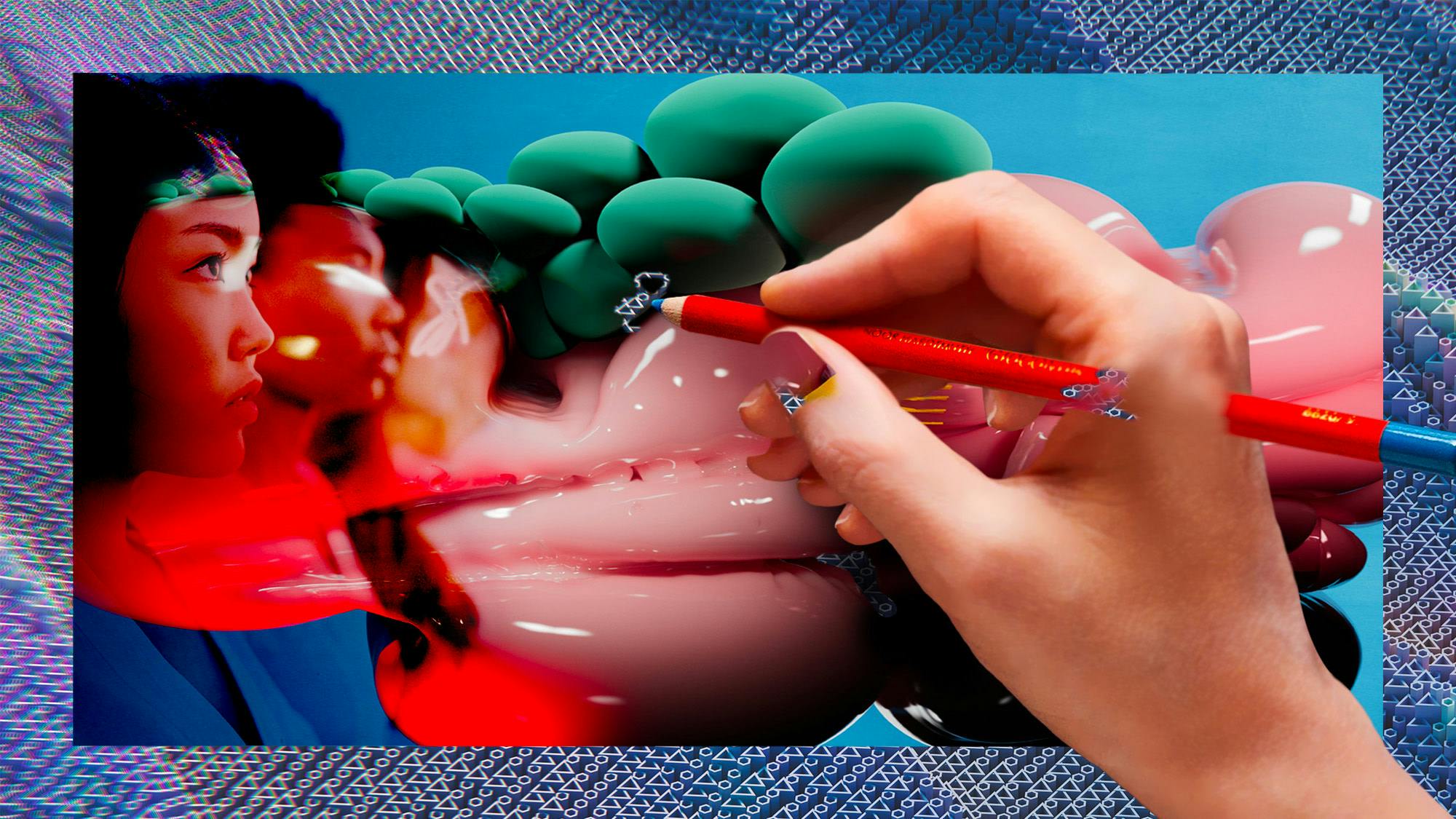
Thinking
Generation AI: a muse to amplify creativity
Generative AI is on everyone’s lips, in every boardroom and every government cabinet, fuelling heated debate on its benefits and threats. But, in our view, the lens we use to debate AI and its future role, feels restrictive.
AI is either replacing us or making us more productive. However, our own early experience of Generative AI (GAI) leads us to think that its impact could be wholly more positive - on the creative industries, at least.
AI is a muse
One of the main narratives we hear about AI is that it will act as co-pilot. Microsoft’s AI tool is even called Co-Pilot. It’s important because that name signals to us the experience Microsoft believes AI should deliver to people. But this limits AI to a functional tool, an assistant that only replicates existing human skills. AI is more than the promise of automation, speed and duplication of what already exists.
At Wolff Olins, we’re exploring AI as a muse. A source of inspiration without the constraints of physical boundaries. Rather than only as a task substitute or way to deliver prescribed outcomes quicker and cheaper, we give ourselves the space and flexibility to use AI to explore, free our imagination and surprise us.
For us, technology’s power is not about iteration, it’s not about delivering more, quicker - it’s about the amplification of our creativity.
Made by humans
You might think this only applies to the creative industry. But I fundamentally believe that there’s a bigger learning for us in how we use GAI and how it will shape our societies.
The challenge with how we see AI today is that we focus on “generative”. It’s a view that’s biased by a need for outputs.
It’s the idea that creativity only equals its output. What you see is what you get.
So generate more, and, if the craft is good enough, it will create something beautiful.
That’s not our experience. Designers and artists around us don’t just generate art. Great creativity moves people and what we see, again and again, is that for it to resonate deeply with people, it helps if it has been created by… people.
Because with people comes personal experiences, emotions and cultural anchoring we can relate to. As yet, AI can’t replicate this lived human experience.
That doesn’t mean we can’t admire, respect and even love a piece of art generated by AI. It simply shows that when humans are involved in the process, we’re not just judging the craft, we’re relating to the stories it tells us.
Brands’ red thread
At Wolff Olins, our clients use brands as a red thread to build their business through several inflection points. In early stages, brands help you define the opportunity. As your brand scales, then matures, it helps you increase the momentum and establish yourself as a market leader. Finally, your brand helps you reinvent yourself and unlock new sources of growth.
Brand is both the glue and the enabler. So in this age of AI, where people will discover new platforms and new ways of engaging with one another, we think that brand will, even more so, act as that red thread. Businesses will have to rally around a core idea and avoid the trap of adding more complexity.
A core brand ethos will ensure that everything you do, from product and marketing to culture and experience feels consistent. More cohesive for people who experience your brand and easier to produce for your teams who use GAI.
For Apple, it’s about beautiful simplicity while for Nike it’s about greatness, and for Disney it’s about magic. For brands without such an ethos – the challenge is harder.
So successful brands and successful use of AI will come to those that have figured out clearly what is at their core and what relationships they want to build with people. For these brands, AI will unleash great storytelling prowess.
AI - like any great muse - has the potential to be hugely positive, transforming our industry for the good. And we know that with that possibility, the polar opposite, a dark side, is also true.
We will get out what we put in. So let's treat our muse with respect and responsibility as it learns and grows, leading us into a new era of human creativity.